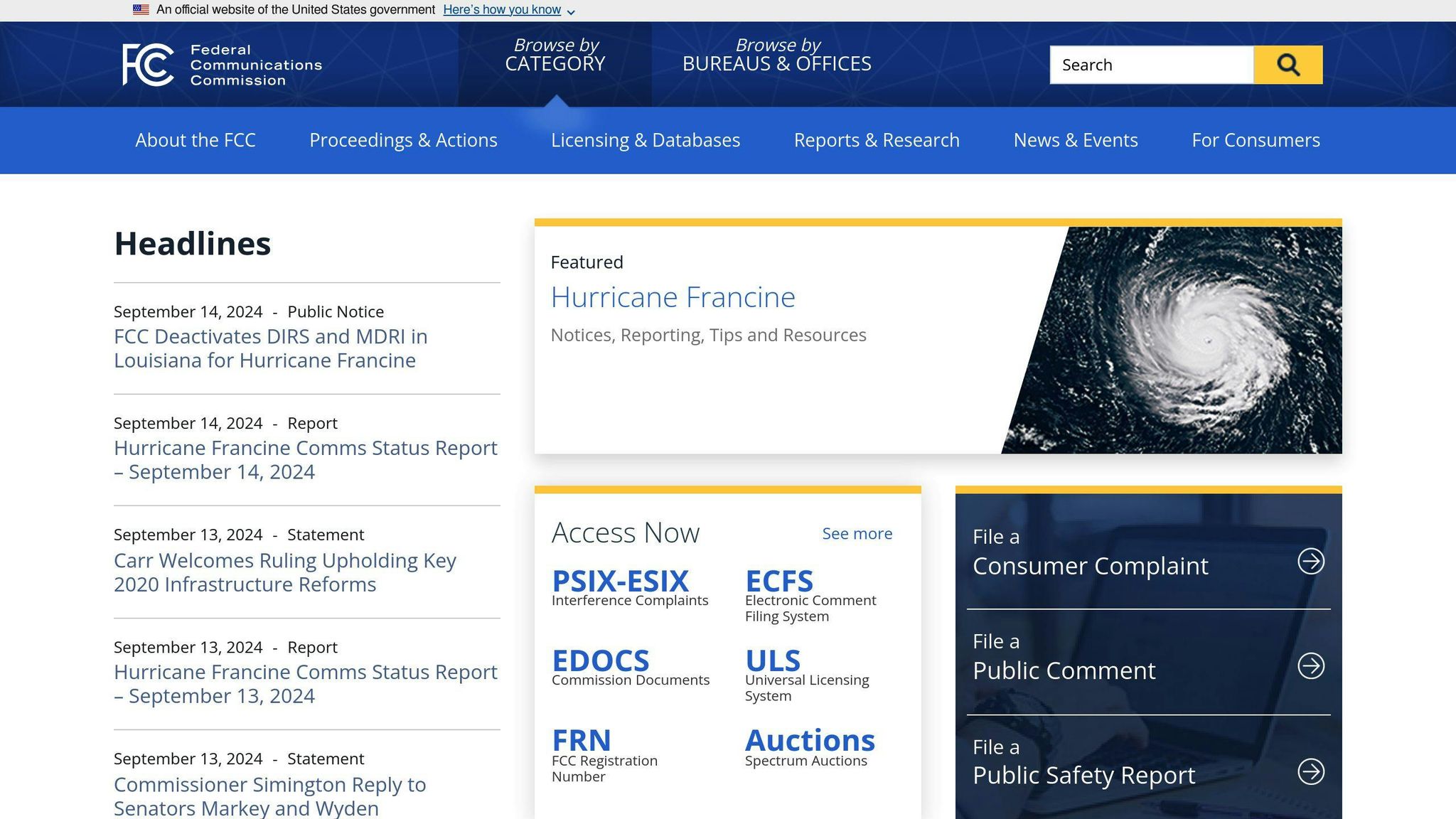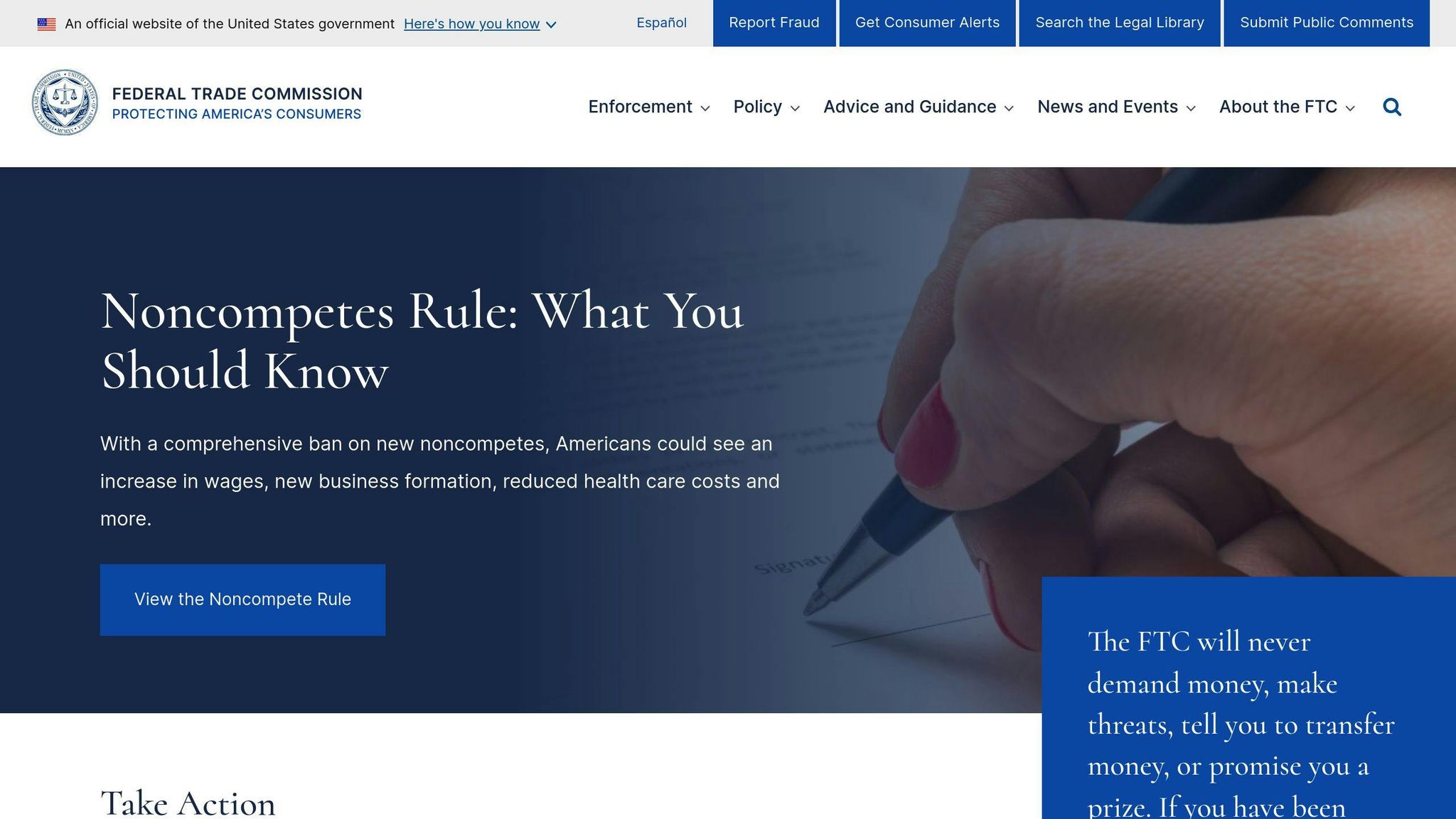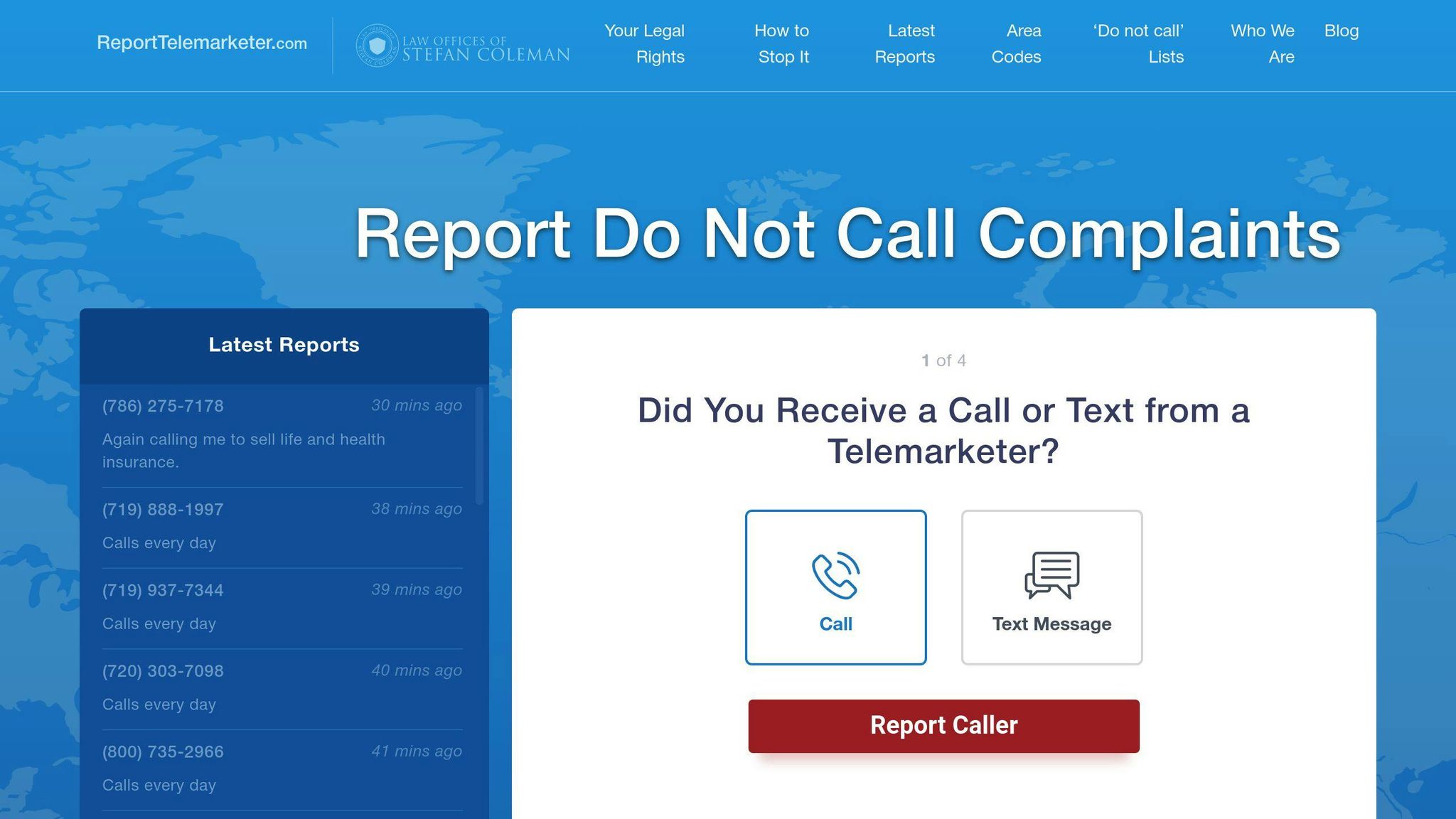
Filing a TCPA complaint helps stop unwanted calls, texts, and faxes while holding violators accountable. Here’s a quick guide:
- What is the TCPA? A federal law protecting you from telemarketing calls, robocalls, and unsolicited texts without consent.
- Why File a Complaint? To stop violations, seek compensation (up to $1,500 per violation), and assist regulators in enforcement.
- Steps to File:
- Document violations: Record dates, times, caller info, and content.
- File with the FCC via their online portal, phone, or mail.
- Report Do Not Call violations to the FTC using their online platform.
Use tools like ReportTelemarketer.com to gather evidence or connect with attorneys for legal action. Filing ensures your rights are protected and violators face penalties.
How to File a Complaint with the Federal Communications Commission
Identifying and Documenting TCPA Violations
Spotting and keeping track of TCPA violations is crucial for building a solid complaint.
Examples of TCPA Violations
Here are some common types of TCPA violations:
- Automated Calls: Receiving robocalls or pre-recorded messages without giving clear consent.
- Text Messages: Getting unsolicited marketing texts, especially from automated systems.
- Do Not Call Violations: Telemarketing calls made to numbers listed on the National Do Not Call Registry.
- Timing Violations: Calls made outside the allowed hours – before 8 AM or after 9 PM in your local time zone.
Each violation can lead to fines of $500 per incident or up to $1,500 if the violation is intentional.
How to Document Violations
To build a strong case, you need detailed records of each violation. Here’s what to focus on:
| Documentation Element | What to Record | Why It Matters |
|---|---|---|
| Call Details | Date, time, duration | Helps establish a pattern of violations. |
| Caller Information | Phone number, company name | Identifies who’s responsible. |
| Communication Content | Subject matter, script used | Confirms the nature of the violation. |
| Your Response | Opt-out requests, prior consent status | Shows your efforts to comply with the rules. |
Keep screenshots, voicemails, and call logs as evidence. These materials are essential to ensure your complaint is taken seriously and can lead to enforcement action.
Requesting Caller Details
When you suspect a violation, gather as much information as possible during the call:
- Ask for the caller’s full name, company name, callback number, and business address.
- Pay attention to evasive or vague answers – this could indicate a violation.
Legitimate businesses are required to share their information when asked. Refusal to provide these details is a major warning sign and should be added to your documentation.
To simplify this process, consider using services like ReportTelemarketer.com. These platforms can help you investigate violations and organize evidence in a way that strengthens your formal complaint.
"Companies generally respond to TCPA complaints filed with the FTC within 15 days, though in some cases, they may take up to 60 days to provide a final response".
Once you’ve documented the violations, you’ll be ready to start the formal complaint process with a strong foundation.
Steps to File a TCPA Complaint
Filing a TCPA complaint ensures that violators are held accountable and helps protect consumer rights. Here’s how to submit your complaint effectively through the main channels.
Filing with the FCC

You can file a TCPA complaint with the FCC using one of these methods:
| Filing Method | How to Submit | What to Include |
|---|---|---|
| Online Portal | Use the FCC’s Consumer Complaint Center website | Complete the complaint form with details of the violations |
| Phone | Call the FCC’s Consumer Help Center | Share your documentation during the call |
| Send to the FCC’s physical address | Include a written complaint and supporting evidence |
Make sure to provide essential details, such as:
- The date and time of the unwanted communication
- The phone number that received the call or text
- The phone number and business name of the caller
- Whether it was a robocall or a live person
- A description of the call’s content
Check the ‘How to Document Violations’ section for tips on gathering evidence.
"The FCC typically processes complaints within 30 days, during which the service provider must investigate and report the results in writing".
Filing with the FTC

The FTC handles complaints about Do Not Call Registry violations through their online Complaint Assistant platform. Here’s how to file your complaint:
- Go to the FTC’s Complaint Assistant website.
- Choose the category for unwanted calls.
- Provide detailed information about the violation.
- Submit your complaint.
For a stronger submission, use tools like ReportTelemarketer.com to document and investigate violations professionally.
Both FCC and FTC complaints benefit from thorough documentation. Here’s a quick comparison of what to expect:
| Agency | Focus Area | Processing Time | Follow-up |
|---|---|---|---|
| FCC | Telecommunications violations | Around 30 days | Email updates with a tracking number |
| FTC | Do Not Call Registry violations | Varies by case complexity | Online status tracking available |
After filing, you’ll receive a tracking number to monitor your complaint. The agencies will then review your case and may take enforcement actions if necessary.
sbb-itb-a8d93e1
What Happens After Filing a Complaint
Complaint Review Process
Once you file a TCPA complaint, the FCC or FTC begins reviewing it. They may forward your complaint to the company involved, and more complex cases can take up to 60 days to resolve.
Here’s what happens during the review:
- Your documentation is examined to ensure all necessary details are included.
- The company is contacted to provide their response to your complaint.
- Evidence from both sides is assessed to decide if further investigation is needed.
You can monitor your complaint’s progress using the FCC’s Consumer Complaint Center or the FTC’s Complaint Assistant portal. The company’s response will be made available for you to review, and you’ll have 60 days to add any additional feedback.
If violations are found, you may qualify for compensation or other legal remedies.
Legal Actions and Compensation
If the agency confirms a TCPA violation, you have options to seek compensation or take legal action. Violations can result in $500 per incident or $1,500 for willful violations. In class action cases, penalties can be much higher.
For serious or repeated violations, consulting a TCPA attorney is highly recommended. Attorneys can:
- Assess the strength of your case
- Collect additional evidence
- Negotiate with violators or represent you in court
Proper documentation is key if you plan to take legal action. Tools like ReportTelemarketer.com can help you organize evidence and prepare your case. They specialize in investigating telemarketers and identifying patterns of violations to support your claims.
Additional Resources for Filing and Enforcement
Alongside the FCC and FTC, platforms like ReportTelemarketer.com and state consumer protection offices offer extra help in dealing with TCPA violations.
ReportTelemarketer.com

This platform streamlines the process of reporting telemarketers and filing complaints. It offers several key services:
- Investigates telemarketer activities and patterns of violations
- Prepares legal documents, such as cease and desist letters
- Connects users with experienced TCPA attorneys
- Operates free of charge for consumers
In addition to online tools, state Attorney General offices provide support through state-specific regulations that complement federal TCPA rules. Many states maintain their own do-not-call lists and have enforcement systems in place, offering extra layers of protection.
These resources simplify the process of filing complaints and documenting violations. By combining them with FCC or FTC complaints, you can strengthen your case and improve your chances of successful enforcement. Using both federal and state resources together ensures a more thorough approach to addressing violations effectively.
Conclusion
Filing a TCPA complaint gives consumers the ability to push back against unwanted telemarketing calls and texts, helping safeguard their privacy rights. With strict enforcement and hefty penalties, violators are held accountable for their actions.
Success often depends on keeping detailed records and acting quickly. Proper documentation strengthens your case and improves the chances of enforcement. There are several ways to file a complaint, and platforms like ReportTelemarketer.com can help by investigating violations and organizing the necessary evidence.
Protecting your rights is essential. While many complaints can be resolved through standard procedures, more complicated cases might require legal advice. Fortunately, many TCPA attorneys work on a contingency basis, so you only pay if they win your case.
FAQs
Here are answers to some commonly asked questions about filing TCPA complaints, along with steps and resources to help you take action.
How do I report a telemarketer that keeps calling?
You can report persistent telemarketers in a few ways. The fastest method is filing a complaint online at DoNotCall.gov. You can also call 1-888-382-1222 (or 1-866-290-4236 for TTY users). Additionally, websites like ReportTelemarketer.com can help you identify violations and explore further actions.
How do I make a TCPA complaint?
First, make sure your phone number is listed on the National Do Not Call Registry. If it’s not, register it. Then, document any violations and submit your complaint to the FCC or FTC. Companies typically respond to these complaints within 15 to 60 days.
How do I file a complaint with the Federal Communications Commission?
You can file a complaint with the FCC through their online portal at fcc.gov/complaints, or by calling 1-888-CALL-FCC (1-888-225-5322). If you use ASL, you can make a video call to 1-844-432-2275.
When submitting your complaint, be sure to include:
- The date and time of the call
- Details about the content or type of communication
- Whether the call was automated or live
- Any information that identifies the caller
- Your registration status on the Do Not Call list
For tips on collecting evidence, check the ‘How to Document Violations’ section earlier in this article. You’ll also find more details on filing complaints and protecting your rights in the earlier sections.